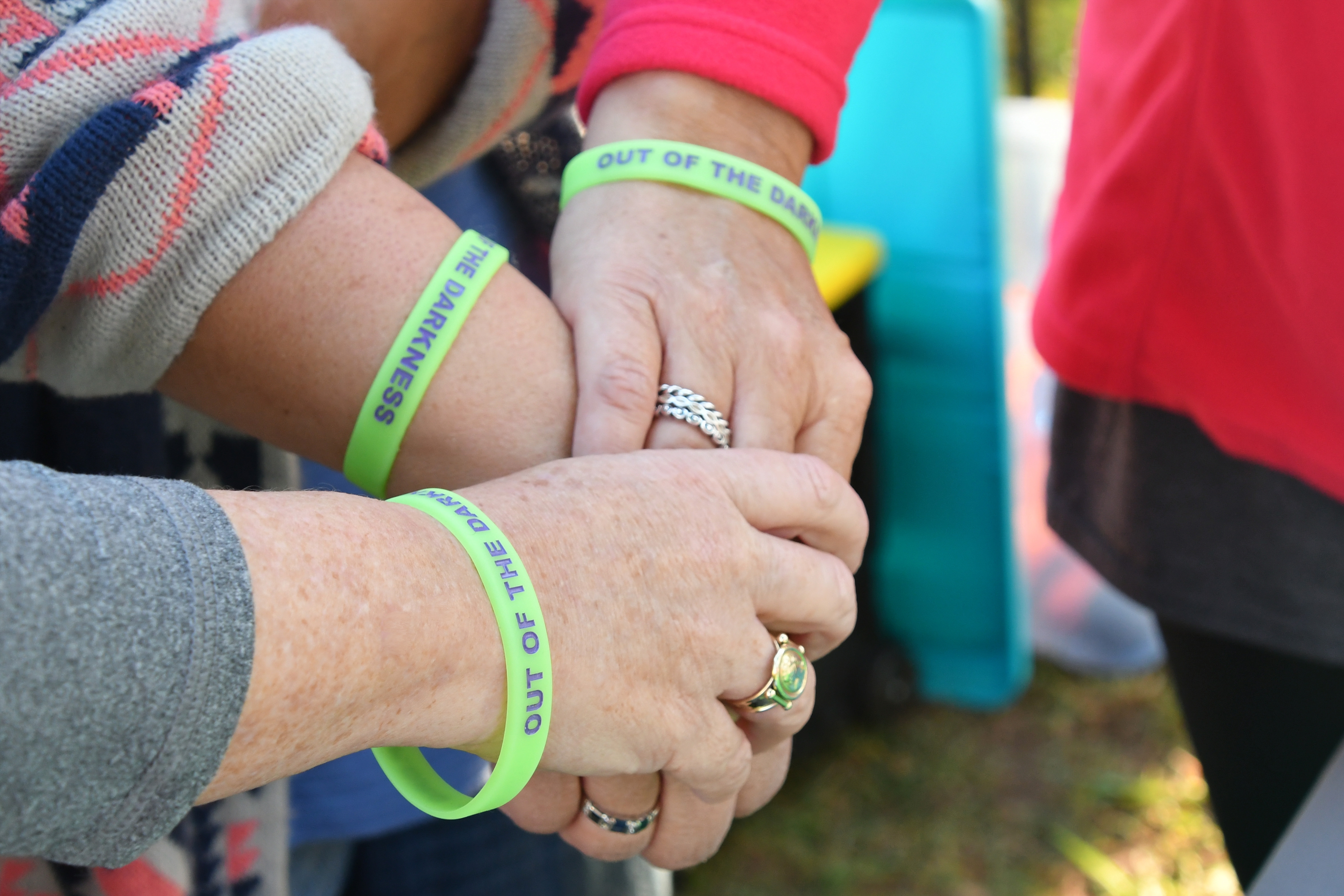Fundraising is not merely about asking for donations; it’s about building connections, inspiring action, and creating lasting change. At the heart of successful fundraising lies the art of storytelling. Stories have a unique power to captivate, persuade, and emotionally resonate with audiences in a way that facts and figures alone cannot. In the realm of fundraising, storytelling serves as a powerful tool to convey the mission, impact, and urgency of a cause, compelling donors to take action and support the initiative.
Storytelling humanizes the cause, transforming abstract concepts and statistics into relatable narratives that tug at the heartstrings of donors. By weaving together personal anecdotes, experiences, and triumphs, fundraisers can forge authentic connections with their audience, fostering empathy and understanding. These emotional connections are pivotal in inspiring individuals to engage with the cause on a deeper level, whether through monetary contributions, volunteerism, or advocacy.
Moreover, storytelling has the ability to cut through the noise of information overload in today’s digital age. In a world bombarded with constant advertisements and messages, a well-crafted story stands out, capturing the attention and imagination of potential donors. By crafting narratives that resonate with the values and aspirations of their audience, fundraisers can cut through the clutter and leave a lasting impression that motivates action.

Understanding the Power of Storytelling in Fundraising
Storytelling is a fundamental aspect of human communication that has been ingrained in our culture for millennia. From ancient civilizations sharing myths and legends around campfires to modern-day marketers crafting brand narratives, storytelling has always been a powerful means of conveying messages, eliciting emotions, and influencing behavior. In the context of fundraising, storytelling serves several critical purposes that make it uniquely effective:
- Emotional Connection: Unlike cold, hard facts and figures, stories have the ability to evoke emotions and forge deep connections with the audience. By tapping into universal human experiences such as love, loss, hope, and resilience, fundraisers can elicit empathy and compassion from potential donors, compelling them to take action to alleviate suffering or support a cause they believe in.
- Personalization: Every fundraising initiative has a story behind it – whether it’s the journey of an individual overcoming adversity, the impact of a nonprofit organization’s programs on a community, or the collective efforts of volunteers coming together to make a difference. By sharing these stories, fundraisers can personalize the cause, making it relatable and relevant to the audience’s own experiences and values.
- Context and Meaning: Stories provide context and meaning to the statistics and data that often accompany fundraising appeals. Instead of presenting donors with abstract numbers, fundraisers can use storytelling to illustrate the real-world implications of their support, demonstrating how their contributions can make a tangible difference in the lives of others.
- Engagement and Retention: In today’s fast-paced, information-saturated world, attention spans are at an all-time low. Stories have the power to cut through the noise and capture the audience’s attention, holding their interest and keeping them engaged from beginning to end. Furthermore, research has shown that people are more likely to remember information presented in the form of a story compared to a list of facts or figures, increasing the likelihood that they will retain the message and take action.
- Inspiration and Motivation: Beyond merely soliciting donations, storytelling has the power to inspire and motivate donors to become actively involved in the cause. By sharing stories of resilience, courage, and transformation, fundraisers can ignite a sense of purpose and possibility in their audience, empowering them to join the movement and become agents of change themselves.

Elements of a Compelling Fundraiser Story
Crafting a compelling fundraiser story requires careful attention to several key elements that are essential for capturing the audience’s attention, eliciting emotions, and inspiring action. These elements include authenticity, emotional appeal, and clarity, among others.
- Authenticity: Authenticity is the cornerstone of effective storytelling. Authentic stories resonate with audiences because they are genuine, honest, and true to the experiences of the individuals or communities they represent. Authenticity builds trust and credibility, fostering a deeper connection between the storyteller and the audience.
- Emotional Appeal: Emotions are a powerful driving force behind human behavior. A compelling fundraiser story should evoke a range of emotions – from empathy and compassion to hope and inspiration. By tapping into the audience’s emotions, fundraisers can create a memorable and impactful narrative that moves people to take action.
- Clarity: Clarity is essential for ensuring that the message of the fundraiser story is understood and resonates with the audience. A clear and concise storyline, free of jargon or unnecessary complexity, allows the audience to engage with the story more effectively and grasp the significance of the cause being presented.
Detailed Explanation of Each Element with Examples
- Authenticity: Authenticity can be conveyed through genuine personal anecdotes, real-life testimonials, and transparent storytelling. For example, a nonprofit organization may share the story of a beneficiary whose life has been transformed by their programs, including quotes or interviews from the individual themselves. This authenticity helps donors connect on a human level and understand the tangible impact of their contributions.
- Emotional Appeal: Emotional appeal is often achieved through vivid descriptions, evocative language, and relatable characters. For instance, a fundraiser story might paint a poignant picture of a child living in poverty, struggling to access basic necessities like food and education. By highlighting the child’s dreams and aspirations, the story elicits empathy and motivates donors to support initiatives aimed at alleviating poverty and providing opportunities for a better future.
- Clarity: Clarity in storytelling involves a clear structure, logical progression, and focused messaging. For example, a fundraising campaign for a clean water project might start by introducing the problem of water scarcity in a specific community, followed by a description of the project’s goals and how donations will be used to address the issue. By presenting the information in a clear and organized manner, donors can easily understand the urgency of the cause and the impact of their support.
Tips for Incorporating These Elements into Fundraising Storytelling
- Know Your Audience: Tailor your fundraiser story to resonate with the values, interests, and concerns of your target audience. Understanding what motivates your donors will help you craft a story that speaks directly to their hearts and minds.
- Use Visuals and Multimedia: Incorporate visuals such as photos, videos, and infographics to enhance the storytelling experience and bring your narrative to life. Visual elements can evoke emotions and create a more immersive and engaging storytelling experience.
- Focus on Impact: Highlight the tangible impact of your fundraising efforts by showcasing success stories, testimonials, and concrete examples of how donations have made a difference. Demonstrating the real-world outcomes of your work reinforces the value and importance of supporting your cause.
Crafting Your Fundraiser Story
Before crafting your fundraiser story, it’s essential to clarify the purpose and identify the target audience for your narrative. Consider the following questions:
- What is the primary goal of your fundraising campaign? Are you seeking to raise awareness, generate donations, recruit volunteers, or mobilize support for a specific cause or initiative?
- Who is your target audience? What demographics, interests, and values characterize your audience? Understanding your audience’s preferences and motivations will help you tailor your story to resonate with their needs and interests.
- What emotions do you want to evoke in your audience? Are you aiming to inspire empathy, compassion, hope, or a sense of urgency? Identifying the desired emotional response will guide the tone and content of your fundraiser story.
By clarifying the purpose and audience for your story, you can ensure that your narrative effectively communicates your message and motivates action.
Developing a Storyline that Aligns with Your Cause and Goals
Once you’ve identified the purpose and audience for your fundraiser story, it’s time to develop a compelling storyline that aligns with your cause and goals. Consider the following elements when crafting your narrative:
- Begin with a captivating hook or introduction that grabs the audience’s attention and sets the stage for your story. Whether it’s a powerful statistic, a thought-provoking question, or a compelling anecdote, the opening of your story should intrigue and engage your audience from the start.
- Establish the context and background of your cause or initiative, providing relevant information about the issue you’re addressing, the impact it has on individuals or communities, and why it’s important to take action.
- Introduce relatable characters or real-life testimonials that humanize the story and bring it to life. Whether it’s a beneficiary of your organization’s programs, a dedicated volunteer, or a passionate advocate, personal stories add depth and authenticity to your narrative.
- Highlight the impact of your work and the tangible outcomes that have been achieved through your fundraising efforts. Share success stories, testimonials, and concrete examples of how donations have made a difference, demonstrating the value and effectiveness of supporting your cause.
- Conclude your story with a compelling call to action that inspires the audience to get involved and make a difference. Whether it’s donating to your cause, volunteering their time, or spreading the word to others, clearly communicate how individuals can contribute to the success of your fundraising campaign.
Techniques for Structuring and Refining Your Story for Maximum Impact
To ensure that your fundraiser story has maximum impact, consider the following techniques for structuring and refining your narrative:
- Keep it concise and focused: Avoid overwhelming your audience with too much information or unnecessary details. Stick to the core elements of your story and focus on conveying your message clearly and succinctly.
- Create a sense of urgency: Use language that conveys a sense of urgency and importance, emphasizing why action needs to be taken now to address the issue at hand. Whether it’s highlighting a pressing need or a limited-time opportunity, urgency can motivate donors to act quickly and decisively.
- Use descriptive language and imagery: Paint a vivid picture with descriptive language and imagery that engages the senses and creates a memorable experience for your audience. Whether it’s describing the sights, sounds, and smells of a community in need or the joy and gratitude of those who have been helped, vivid imagery can evoke emotions and make your story more compelling.
- Incorporate storytelling techniques: Use storytelling techniques such as foreshadowing, suspense, and resolution to keep your audience engaged and invested in your narrative. By crafting a compelling storyline with twists and turns, you can hold your audience’s attention and keep them eager to learn more.
- Seek feedback and iterate: Once you’ve crafted your fundraiser story, seek feedback from trusted colleagues, mentors, or members of your target audience. Listen to their input and suggestions for improvement, and be willing to iterate and refine your story based on their feedback. Continuous improvement is key to creating a fundraiser story that resonates with your audience and drives meaningful results.
Using Different Mediums to Tell Your Fundraiser Story
In today’s digital age, fundraisers have a multitude of mediums at their disposal to tell their stories effectively. Here are some of the most common mediums used in fundraising storytelling:
- Videos: Video storytelling allows fundraisers to convey their message through visual and auditory elements, capturing the attention and emotions of their audience. Whether it’s a heartfelt testimonial, a documentary-style narrative, or a captivating animation, videos have the power to create a compelling and immersive storytelling experience.
- Written Narratives: Written narratives, such as blog posts, articles, and personal essays, provide an opportunity for fundraisers to delve deep into the details of their story and convey their message with clarity and precision. Written narratives allow for creative expression and storytelling techniques that can engage readers and inspire action.
- Social Media: Social media platforms like Facebook, Instagram, Twitter, and LinkedIn offer a dynamic and interactive space for fundraisers to share their stories with a wide audience. From short captions and posts to longer-form content like articles and videos, social media allows fundraisers to connect with supporters, raise awareness, and drive engagement in real-time.
- Photography: They say a picture is worth a thousand words, and in fundraising storytelling, photography can be a powerful medium for capturing the essence of a story and evoking emotions. Whether it’s a striking image of a beneficiary, a poignant moment captured in time, or a powerful visual symbol, photographs can convey the heart and soul of a fundraiser story in a single frame.
- Podcasts: Podcasting has emerged as a popular medium for storytelling, offering fundraisers a platform to share their stories through audio recordings. Whether it’s interviews with beneficiaries, behind-the-scenes insights, or thought-provoking discussions, podcasts allow fundraisers to connect with their audience in a more intimate and conversational format.
Tips for Choosing the Right Medium for Your Audience and Message
When choosing the right medium for your fundraiser story, consider the following tips:
- Know Your Audience: Understand the preferences, habits, and demographics of your target audience to determine which medium will resonate best with them. For example, if your audience is active on social media, consider leveraging platforms like Instagram or TikTok to reach them where they are.
- Match the Medium to the Message: Consider the nature and tone of your fundraiser story and choose a medium that aligns with its content and objectives. For example, if your story relies heavily on visuals and emotions, a video or photography may be the most effective medium for conveying your message.
- Leverage Multiple Mediums: Don’t limit yourself to just one medium – explore the possibilities of using multiple mediums to tell your story from different angles and perspectives. For example, you could start with a written narrative on your website, supplement it with photos and videos on social media, and engage with your audience through live streams or podcasts.
- Consider Accessibility: Ensure that the medium you choose is accessible to all members of your audience, including those with disabilities or limitations. For example, provide alternative formats such as audio descriptions for videos or transcripts for podcasts to accommodate diverse audiences.
- Test and Iterate: Experiment with different mediums and formats to see what resonates best with your audience, and be willing to adapt and iterate based on feedback and performance metrics. By testing and refining your approach, you can optimize your fundraiser story for maximum impact and engagement.
Engaging Your Audience Through Your Fundraiser Story
- Start with a Strong Hook: Grab your audience’s attention from the beginning with a powerful hook that sparks curiosity or emotion. This could be a compelling statistic, a thought-provoking question, or a gripping anecdote that draws the reader in and sets the tone for your story.
- Use Vivid Imagery and Descriptive Language: Paint a vivid picture with descriptive language and imagery that appeals to the senses and evokes emotions. Describe scenes, characters, and emotions in detail to create a more immersive and engaging storytelling experience.
- Appeal to Emotions: Emotions are a powerful motivator for action. Use storytelling techniques to evoke empathy, compassion, hope, or other emotions that resonate with your audience and compel them to take action in support of your cause.
- Incorporate Personal Stories and Testimonials: Share real-life stories and testimonials from individuals who have been impacted by your cause. Personal stories add authenticity and relatability to your fundraiser story, making it more compelling and persuasive.
- Create a Sense of Urgency: Communicate the urgency of your cause and the importance of taking action now. Use language that conveys a sense of immediacy and highlights the consequences of inaction to motivate your audience to get involved.
Encouraging Audience Involvement and Participation
- Call to Action: Clearly articulate the actions you want your audience to take in response to your fundraiser story. Whether it’s making a donation, volunteering their time, or spreading the word to others, provide clear and specific instructions for how individuals can contribute to your cause.
- Foster Engagement: Encourage audience engagement and participation by inviting them to share their own stories, experiences, and ideas related to your cause. Create opportunities for dialogue and interaction through social media polls, Q&A sessions, or live events to deepen the connection with your audience.
- Provide Opportunities for Involvement: Offer various ways for your audience to get involved and make a difference, catering to different interests, skills, and levels of commitment. Whether it’s volunteering at an event, joining a fundraising campaign, or becoming a monthly donor, provide options that cater to diverse preferences and capabilities.
- Show Appreciation: Recognize and appreciate the contributions of your supporters to demonstrate gratitude and foster a sense of belonging. Publicly acknowledge donors, volunteers, and advocates through thank-you messages, shoutouts, or recognition events to strengthen relationships and encourage continued participation.
Leveraging Storytelling to Build Relationships and Foster Donor Loyalty
- Maintain Consistency: Consistency is key to building trust and credibility with your audience. Stay true to your organization’s mission, values, and storytelling style across all communications to create a cohesive and authentic brand identity that resonates with donors.
- Cultivate Meaningful Connections: Foster genuine relationships with your donors by engaging them in meaningful conversations, listening to their feedback and concerns, and showing appreciation for their support. Build rapport and trust over time by staying connected and keeping donors informed about the impact of their contributions.
- Share Progress and Impact: Keep donors engaged and motivated by regularly sharing updates on the progress of your fundraising initiatives and the impact of their support. Use storytelling to highlight success stories, milestones, and achievements that demonstrate the tangible difference their contributions are making in the lives of others.
- Provide Exclusive Content and Benefits: Offer donors exclusive content, perks, or benefits as a token of appreciation for their support. This could include behind-the-scenes updates, special events, or insider access to organization activities that make donors feel valued and connected to the cause.

Measuring the Impact of Your Fundraiser Story
- Donation Metrics: Track the number of donations received, the total amount raised, and the average donation size. These metrics provide insights into the financial impact of your fundraiser story and the effectiveness of your fundraising efforts.
- Engagement Metrics: Monitor engagement metrics such as website traffic, social media interactions (likes, comments, shares), email open rates, and click-through rates. Engagement metrics measure the level of interest and interaction generated by your fundraiser story across different channels.
- Conversion Rates: Analyze conversion rates to assess how many individuals who engage with your fundraiser story take the desired action, such as making a donation, signing up for updates, or volunteering their time. Conversion rates indicate the effectiveness of your storytelling in motivating action and driving results.
- Reach and Impressions: Measure the reach and impressions of your fundraiser story to understand how many people have been exposed to your message. This includes metrics such as social media reach, email subscribers, and website visitors, which provide insights into the visibility and awareness generated by your storytelling efforts.
Tools and Methods for Tracking and Analyzing the Impact of Your Fundraiser Story
- Analytics Platforms: Use analytics platforms such as Google Analytics, social media insights, and email marketing software to track and analyze key metrics related to your fundraiser story. These platforms provide valuable data and insights into audience behavior, engagement patterns, and conversion rates across different channels.
- Surveys and Feedback: Collect feedback from your audience through surveys, polls, and feedback forms to gather insights into their perceptions, preferences, and experiences with your fundraiser story. Use this qualitative data to identify areas for improvement and refine your storytelling approach.
- A/B Testing: Conduct A/B testing experiments to compare different versions of your fundraiser story and measure their impact on audience engagement and conversion rates. Test variables such as headlines, imagery, calls to action, and storytelling techniques to identify the most effective elements for achieving your goals.
- Social Listening Tools: Monitor social media conversations and mentions related to your fundraiser story using social listening tools. These tools allow you to track sentiment, identify trends, and gauge audience reactions to your storytelling efforts in real-time, enabling you to adapt and respond accordingly.
Making Adjustments Based on Feedback and Data to Improve Future Storytelling
- Review and Analyze Data: Regularly review and analyze the data collected from your storytelling efforts to identify trends, patterns, and areas for improvement. Look for insights into what resonates with your audience, which channels are most effective, and where there may be room for optimization.
- Solicit Feedback: Seek feedback from donors, supporters, and other stakeholders to gather insights into their perceptions and experiences with your fundraiser story. Use this feedback to identify strengths and weaknesses, as well as opportunities for refinement and enhancement.
- Experiment and Iterate: Experiment with different storytelling techniques, formats, and channels to test what works best for your audience. Continuously iterate and refine your storytelling approach based on feedback and data insights, making adjustments as needed to improve effectiveness and impact.
- Set Goals and Objectives: Establish clear goals and objectives for your fundraiser story, and regularly assess progress towards these goals using relevant metrics and benchmarks. Adjust your storytelling strategy as needed to align with your objectives and maximize impact.
Conclusion
Are you ready to take your nonprofit fundraising to the next level? Werbylo is here to help! As a free fundraising software designed specifically for nonprofits, Werbylo empowers organizations like yours to tell compelling stories, engage donors, and drive meaningful impact.
After reading this blog on “How You Can Deliver The Fundraiser Story More Effectively,” it’s clear that effective storytelling is essential for successful fundraising. Werbylo provides the tools and resources you need to craft and share your fundraiser story with authenticity, emotion, and clarity.
Don’t miss out on this opportunity to elevate your fundraising efforts with Werbylo. Sign up now and unleash the power of storytelling to drive positive change for your organization and the communities you serve. Together, let’s make a difference with Werbylo.




